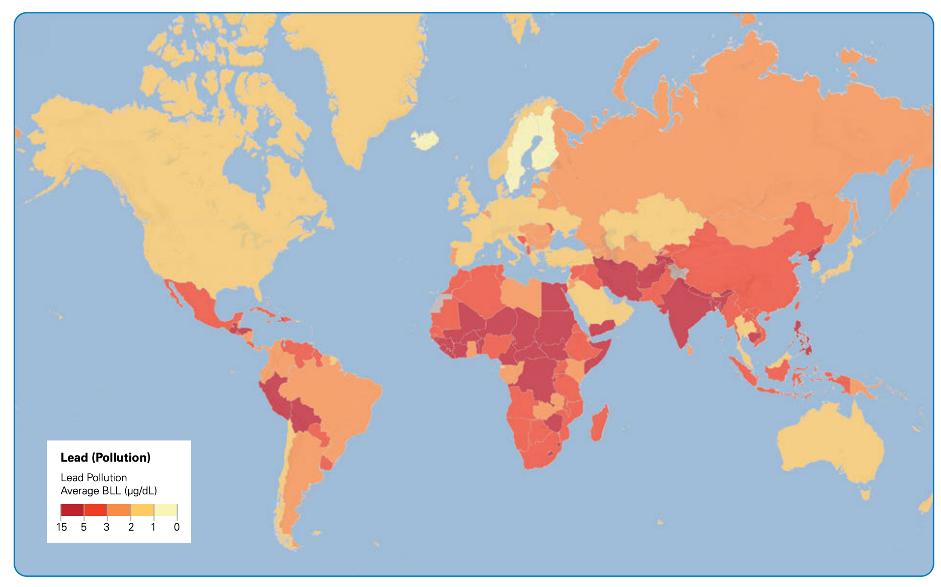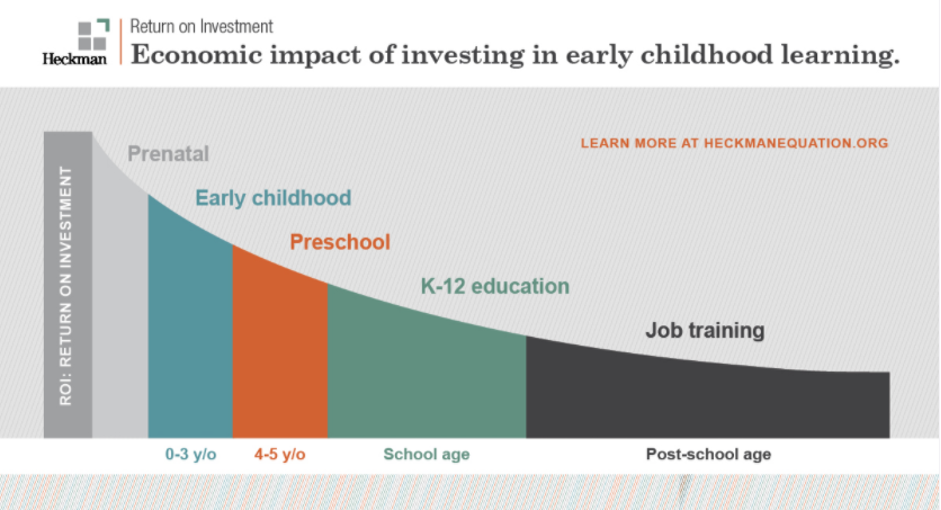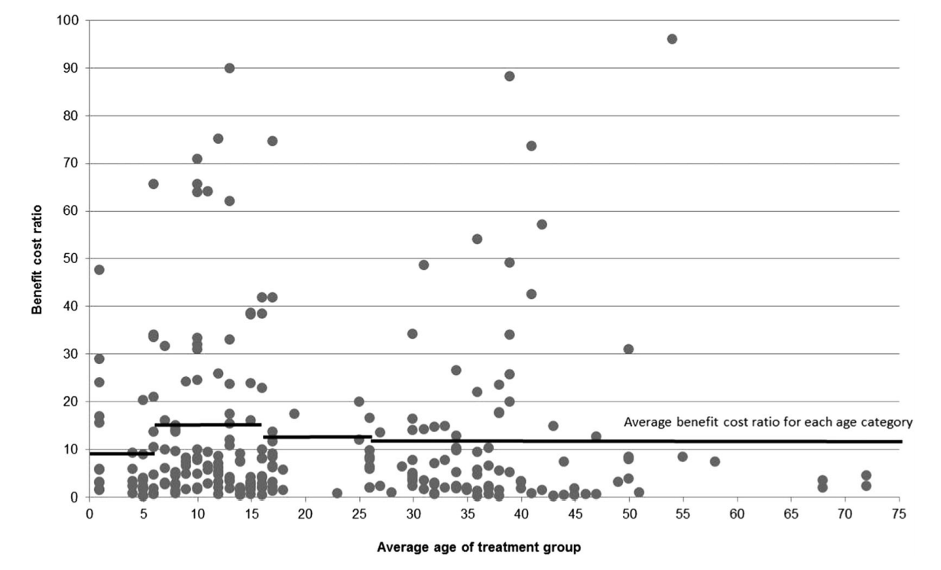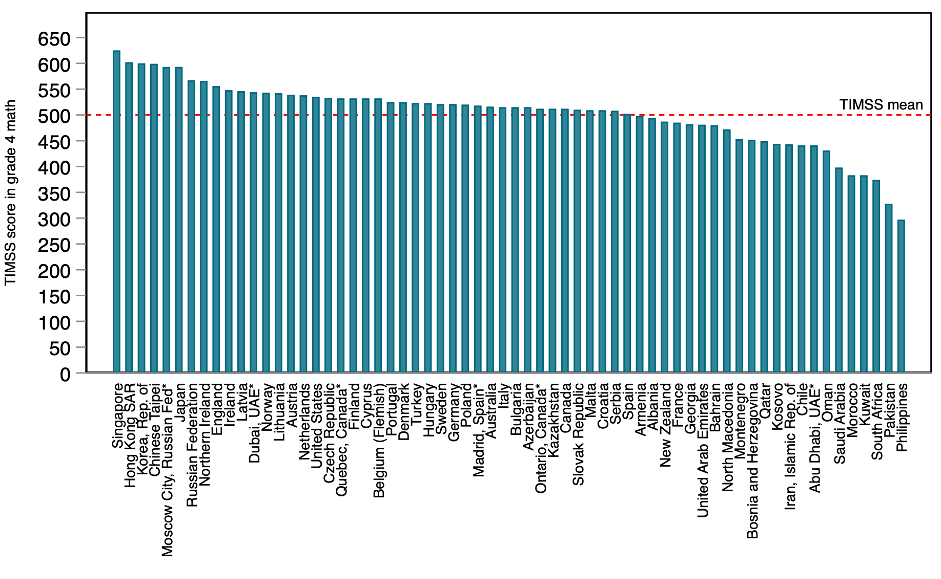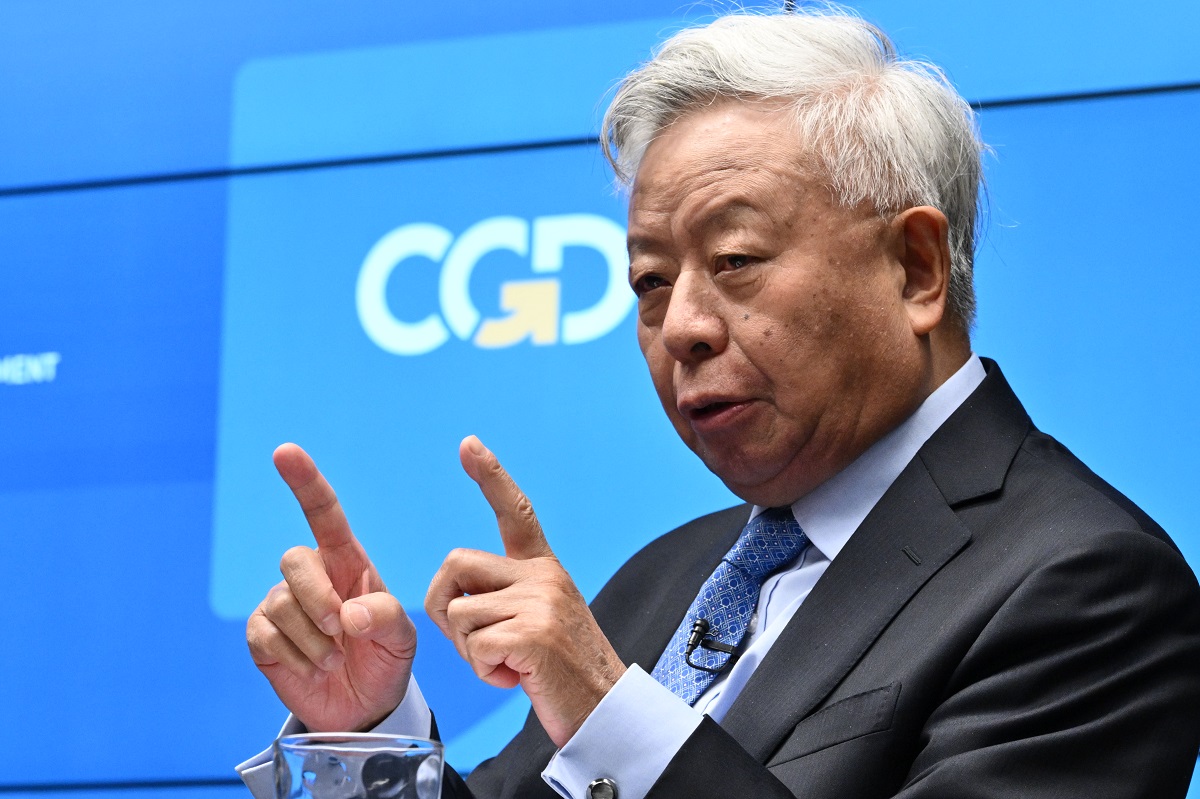With hundreds of millions of kids out of school for months on end, the COVID-19 pandemic sucked up most of our attention in 2020, and probably rightly so. But, it wasn’t all about COVID. We take a look at five education stories in 2020, from lead poisoning to selective schools, that may turn out to shape policy in the years to come.
1. Lead poisoning is harming the cognitive ability and educational opportunities of hundreds of millions of children
A report released this year by UNICEF and Pure Earth suggests that lead poisoning is affecting children far more than we originally thought. The report estimates that 800 million children globally—that’s around 1 in 3 children—have levels of lead in their blood at or above the level that requires intervention. Most of these children live in Africa and Asia.
Figure 1. Children’s average blood lead levels by country (μg/dL)
Source: The Toxic Truth, UNICEF and Pure Earth.
Lead is more dangerous for children than it is for adults. Children absorb it more readily and they drink more water relative to their body weight than adults do. It particularly affects children’s developing nervous systems and brains and has long-term effects, including deficits in cognitive ability, lower educational attainment, behavioural disorders, increased tendencies for violent crime, and reduced lifetime earnings. A pooled analysis of lead exposure and intellectual function found that children with higher (30 μg/dL) blood lead levels had IQ levels of almost seven points less than children with lower (2.4 μg/dL) blood lead levels. And evidence from the US found that high blood lead levels before the age of six are strongly associated with poor academic achievement in primary school grades.
Since lead poisoning affects children in poor countries most, and since lead poisoning is detrimental to children’s educational achievement, perhaps the education sector should invest more in research to understand the long-term educational effects on exposure to lead and in cross-sector efforts to prevent and control exposure to lead.
2. The Heckman Curve is dead
Nobel Prize-winning economist James Heckman argued that “skills beget skills.” He said that investing early in life can increase the productivity of later human capital investment and the rates of returns of social policies targeting disadvantaged individuals are higher for young children.
But late last year Rea and Burton tested this theory. They compiled the cost-benefit ratios of more than 250 social programs analysed by the Washington State Institute for Public Policy and they found something different. Investing earlier in the life of disadvantaged individuals did not appear to be more cost-effective than investing later on. The cost-benefit ratio was actually lower for children under five compared with older children, although because of the large variance in estimated rates of returns the difference was not statistically significant (Figure 3).
Does this mean that investing in young children isn’t cost effective? Absolutely not. There are a great many interventions targeting young children that are cost-effective. What we should take from it is that interventions at an older age can be just as successful. Hendren et al. suggest that evidence-based direct investments in children are generally very good value for money, up to the age of around 20. In other words, early childhood ain’t no magic bullet. But in education, what is?
3. Newly released data from internationally comparable assessments shine more light on who’s learning (and who isn’t)
The results from the new Trends in International Mathematics and Science Study (TIMSS), an internationally benchmarked assessment focused on grade 4 and 8 math and science, were released earlier this month. Similar to the last TIMSS round, East Asian countries lead the world in both math and science. At the other end of the rankings, the Philippines, Pakistan, and South Africa are among the worst performers on both grade 4 math and science. Only 19 percent of grade 4 children in the Philippines, 27 percent in Pakistan, and 37 percent in South Africa meet the low international benchmark in math, meaning they have “some basic mathematical knowledge” and can add, subtract, multiply, and divide.
Figure 4. Average TIMSS scores for grade 4 math
Source: authors’ analysis of TIMSS 2019 data. Note: * denotes benchmarking participants.
In the Philippines and Pakistan, even the 95th percentile students are below the TIMSS mean of 500 in both math and science. The “best performers'' from the Philippines and Pakistan are getting less than a mediocre education by global standards. Meaningful learning improvements would require raising the floor for everyone, along with addressing inequalities between different sub-groups.
While the results are grim, this year saw the entry of first-time-participant Pakistan, who participated in an international assessment for the first time ever. This deserves credit, as CGD colleagues write in an op-ed for a Pakistani newspaper. Understanding the problem of poor learning is the first step towards fixing it. However, in Pakistan we see no signs so far of something akin to a “PISA shock,” where poor results spurred governments in Peru and Germany to action.
Staying on international assessments and hot off the press, PASEC results—the regional learning assessment carried out in francophone countries—were released this week and offer a glimmer of hope. Reading skills of students at the end of primary school improved by 0.2 standard deviations since the 2014 assessment, with some large increases in Benin and Niger. Some early highlights are here.
4. As evidence mounts up against selective schools, New York City (temporarily) eliminated admissions screening in middle schools
Worldwide, elite public schools are popular with parents and politicians—their places are in high demand and they are generally perceived as the best schools in the system. The widespread belief is that they are vehicles for social mobility, plucking the poor-but-brilliant and endowing them with an education that sets them up to achieve life outcomes equal to their more advantaged peers. Last year we reviewed the evidence on selective schools, concluding that their impact on learning outcomes is limited at best, but coming at a high cost and with questionable equity implications. New research published this year suggests that elite public schools do not raise test scores overall—although children who attend them are more positive about their experience in high school. For poorer children, they have a negative effect on grades.
So, are elite public schools losing their sheen? One of the biggest education stories this year—admittedly prompted by COVID-19—was the move by New York City mayor Bill de Blasio to eliminate all admissions screening into New York City middle schools and replace it with a lottery. Admissions screening is currently used by about 40 percent of the city’s middle schools—schools in which Black and Latino students are significantly underrepresented. The new policy is for one year only, because the standardised tests used for admission were forced to be cancelled by the pandemic. But, de Blasio has called the new policy an experiment which could end selective schools and improve integration in the city for good.
Admission tests in other places will undoubtedly also be affected by the pandemic. Perhaps now is the time for those systems to follow de Blasio’s lead and abolish selective schools for good.
5. Progress made on allowing pregnant girls to attend school
Adolescent pregnancy is a common risk across sub-Saharan Africa that negatively impacts secondary school participation for girls. This risk is heightened during times of crisis and can be further exacerbated following prolonged school closures. One estimate suggests that as many as 1 million girls will be at risk of not returning to school following COVID-19 school closures due to pregnancy. The risk of not returning to school following pregnancy stems not only from the time and resource constraints that come with being a new mother, but also from discrimination and laws preventing girls from returning to school once they’ve had a child.
Over the past few years, a growing number of countries in the African Union have adopted laws and policies protecting adolescent girls’ right to continue their education following pregnancy. This year, our CGD colleagues David Evans and Amina Mendez Acosta published analysis that shows that not only is allowing girls who become pregnant to attend school the right thing to do, but that it’s also a smart policy choice in the long-run. Lifting bans on pregnant girls attending school is associated with lower pregnancy rates than would be predicted if pre-existing trends had continued across the sub-Saharan African countries which lifted bans between 1993 and 2015.
At least three additional countries in the African Union made progress toward protecting the rights of girls who become mothers while still in school. In Zimbabwe, the government introduced a new law making it illegal to expel students who become pregnant. Sierra Leone lifted a 2010 ban on pregnant girls attending school and sitting for national exams to be in immediate effect following school re-openings. And after many years of negotiation, the Government of Tanzania and the World Bank agreed to a $500 million loan aimed at improving secondary education. The agreement had been previously stalled due in large part to concerns from Tanzanian civil society over the exclusion of pregnant girls from secondary school. The new loan enables girls who become pregnant to attend alternative schools, sit for exams, and eventually return to state schools. The agreement, however, falls short of ending a ban on pregnant girls attending school. The ban is currently being challenged in court.
While there is no doubt that there is still a long way to go toward ensuring that adolescent girls who become mothers are able to continue their education across the continent, we saw some positive developments in 2020 both in terms of research on the effects of ending pregnancy bans as well as in policies protecting girls. These developments give us hope for continued progress in 2021 and beyond.
What a year it’s been. Here’s hoping that 2021 will bring a return to the classroom for all the world’s children.
Disclaimer
CGD blog posts reflect the views of the authors, drawing on prior research and experience in their areas of expertise. CGD is a nonpartisan, independent organization and does not take institutional positions.


